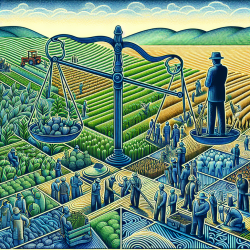The agricultural sector is a cornerstone of the U.S. economy, heavily reliant on migrant workers to meet its labor demands. Among these workers are those employed under the H-2A visa program, which allows foreign nationals to fill temporary agricultural jobs. However, the vulnerability of these workers to labor violations is a significant concern.
Key Findings from Recent Research
A recent study titled "Enhancing detection of labor violations in the agricultural sector: A multilevel generalized linear regression model of H-2A violation counts" sheds light on this issue. The research identifies several factors at the state and industry levels that correlate with H-2A violations. These include:
- Average Farm Acreage Size: Larger farms tend to report more violations.
- Number of Small/Medium Establishments: A higher number of smaller establishments correlates with increased violations.
- Poverty Rates: Higher poverty rates are associated with more detected violations.
Implications for Practitioners
The findings offer valuable insights for practitioners involved in labor inspections and compliance efforts. By understanding these correlations, practitioners can better allocate resources and prioritize inspections in areas with higher risks of violations. This targeted approach can lead to more effective enforcement of labor regulations and protection for vulnerable workers.
Strategies for Improvement
The study suggests that enhancing detection efforts requires a flexible strategy that considers both location and industry type. Practitioners should focus on:
- Resource Allocation: Directing resources towards areas with higher predicted violation rates.
- Collaborative Efforts: Working with local task forces to improve detection and response to violations.
- Cultural Competency: Training inspectors to understand cultural and language barriers that may affect reporting and detection.
The Path Forward
This research highlights the need for ongoing efforts to improve labor conditions for H-2A workers. Practitioners are encouraged to delve deeper into these findings and consider further research to refine inspection strategies and policies. By doing so, they can contribute to creating a safer and more equitable working environment for all agricultural workers.










